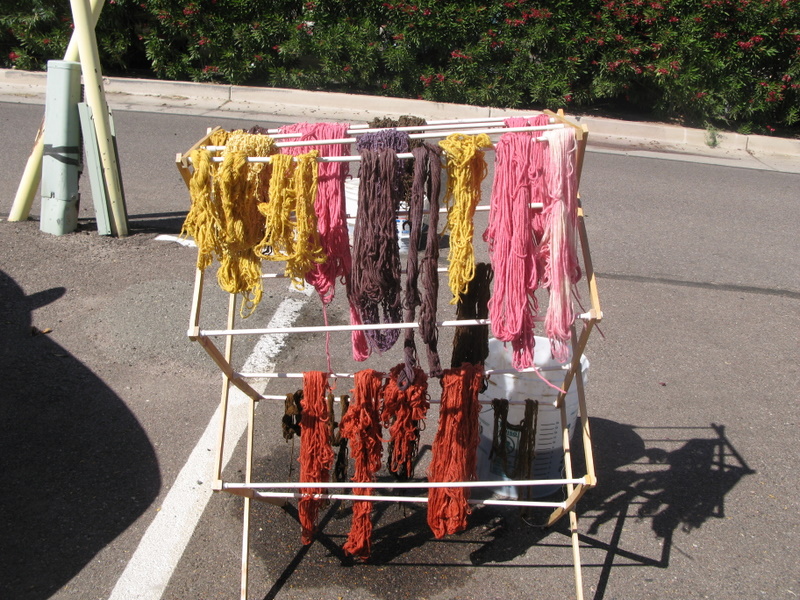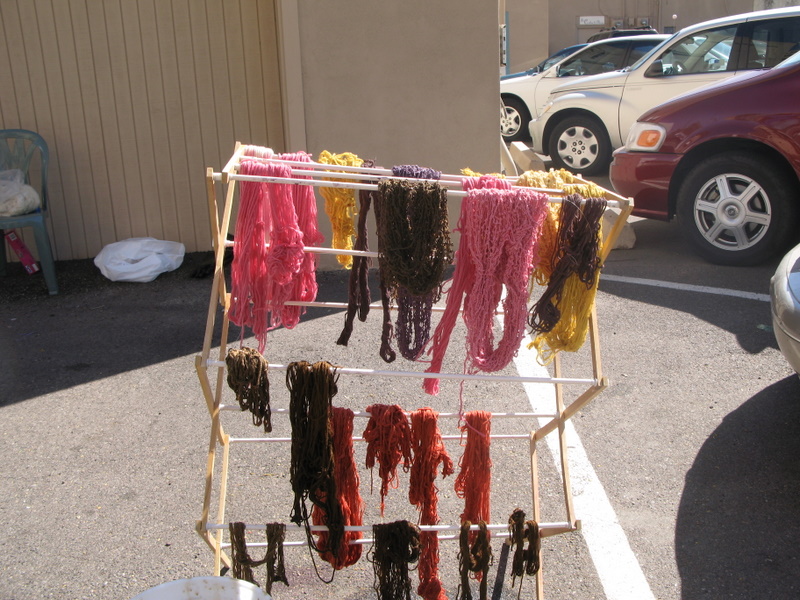Barking Up the Right Tree

Yarns dyed with various types of bark. From top left, osage orange, logwood purple, brazilwood, and sandalwood (bottom)
A couple of times a year, I do dye classes for the Fiber Factory in Mesa, Arizona. Last weekend, we worked with various bark dyes and walnut hulls. Contemporary Navajo weavers like D.Y. Begay and Roy Kady also use some of these exotic barks, but traditional Navajo weavers have used mountain mahogany, black walnut and alder barks to produce color for generations. The trick to achieving maximum color extraction from many bark based dyestuffs is low temperature and long processing. I started soaking some of these materials a full three days before the class, and I could have started a week before.
The pink color that we achieved came from brazilwood chunks, and they could have easily been soaked for a longer time and the yarn could have been left in the dyebath overnight. I started the brazilwood with a rubbing alcohol oxidation process per Bjo Trimble of Griffin Dye Works. I usually work with brazilwood sawdust, which is easier to coax maximum color out of because it is not as dense. We also used a similar process with the sandalwood powder that produced the terra cotta color in the yarns at the bottom of the picture. The yellow color came from osage orange sawdust that was simply simmered for about 30 minutes. The purplish gray and purple came from logwood extract, which I’m always reluctant to use because the color is quite fugitive.
We got some wonderful deep browns from the walnut hulls, which were in pieces and which I’d soaked for a couple of days before the class. The hulls can be soaked for literally weeks and can be reused again to produce different tones of brown and butternut tan. We used both alum and copper as modifiers from the walnut colors, which you can see in the picture below, although the sun was so bright that some of the walnut dyed yarn looks black. This coming weekend, I’ll be doing another class on madder, cochineal and indigo. If you’d like more information on natural dyes, check the Griffin Dye Works site and Jenny Dean’s excellent Wild Colour blog.
Mary Walker

